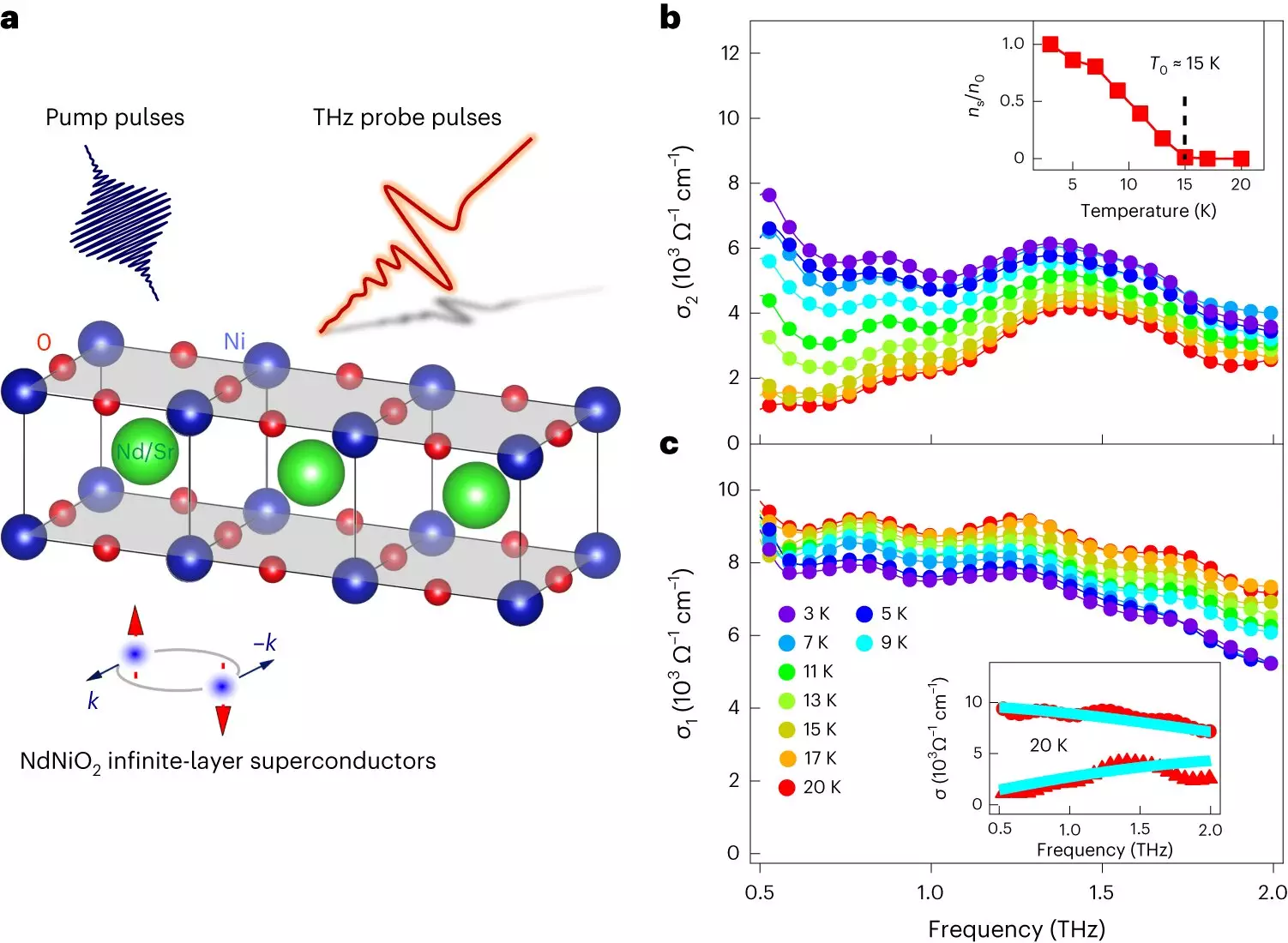Scientists from the U.S. Department of Energy’s Ames National Laboratory and SLAC National Accelerator Laboratory have made significant strides in unraveling the mysteries of infinite-layer nickelates, a class of unconventional superconductors. By providing new data and analysis in their recent publication in Nature Materials, the research team sheds light on the unique properties and behaviors of these materials, setting the stage for a deeper understanding of superconductivity as a whole.
Superconductivity, the ability of a material to conduct electricity without energy loss, has revolutionized numerous fields such as medical imaging and quantum computing. Traditionally, superconductors have been categorized into two types: conventional and unconventional. The key distinction lies in their critical temperature, with conventional superconductors operating at ultra-low temperatures, while unconventional superconductors exhibit superconductivity at relatively higher (though still low) temperatures.
At the electronic level, superconductors exhibit intriguing phenomena. When a superconductor reaches its critical temperature, electron pairs known as Cooper pairs are formed, creating a superconducting gap. In conventional superconductors, this gap is uniform in size across all directions (s-wave superconductivity). However, unconventional superconductors, such as infinite-layer nickelates, display gaps that vary depending on the direction of electron flow (d-wave superconductivity). Understanding these variations is crucial for unlocking the mysteries of unconventional superconductivity.
Infinite-layer nickelates have recently emerged as an exciting class of unconventional superconductors. Initially discovered by Harold Hwang at SLAC, these materials present unique challenges due to their thin and complex nature, existing as films on other materials. Traditional investigative tools struggle to capture the fundamental properties of these superconductors. To overcome this obstacle, Jigang Wang’s team at Ames Lab employed terahertz-wave spectroscopy, a technique in which they are experts, to examine the nickelates.
Using terahertz-wave spectroscopy, the research team was able to measure the gap sizes in infinite-layer nickelates, leading to a crucial discovery. They observed rapid superconducting fluctuations when the material was close to or above its critical temperature, confirming the presence of d-wave superconductivity. This finding aligns with the properties exhibited by other unconventional superconductors previously identified by Zhi-Xun Shen from Stanford University, a member of the research team.
Unraveling the Secrets of Superconductivity
Despite these advancements, the nature of unconventional superconductivity remains a major challenge in condensed matter and materials physics. Scientists are still engaged in debates regarding the mechanisms that bind electrons in Cooper pairs. However, the study of infinite-layer nickelates offers promising insights into overcoming these obstacles and potentially solving this long-standing enigma.
The research conducted by the team from Ames Lab and SLAC marks a significant milestone in our understanding of unconventional superconductors, specifically infinite-layer nickelates. By utilizing innovative techniques and analysis, they have brought us closer to demystifying the intricacies of superconductivity. These findings will not only pave the way for new applications of superconductors but also contribute to the broader field of condensed matter and materials physics, ultimately shaping the technologies of the future.


Leave a Reply